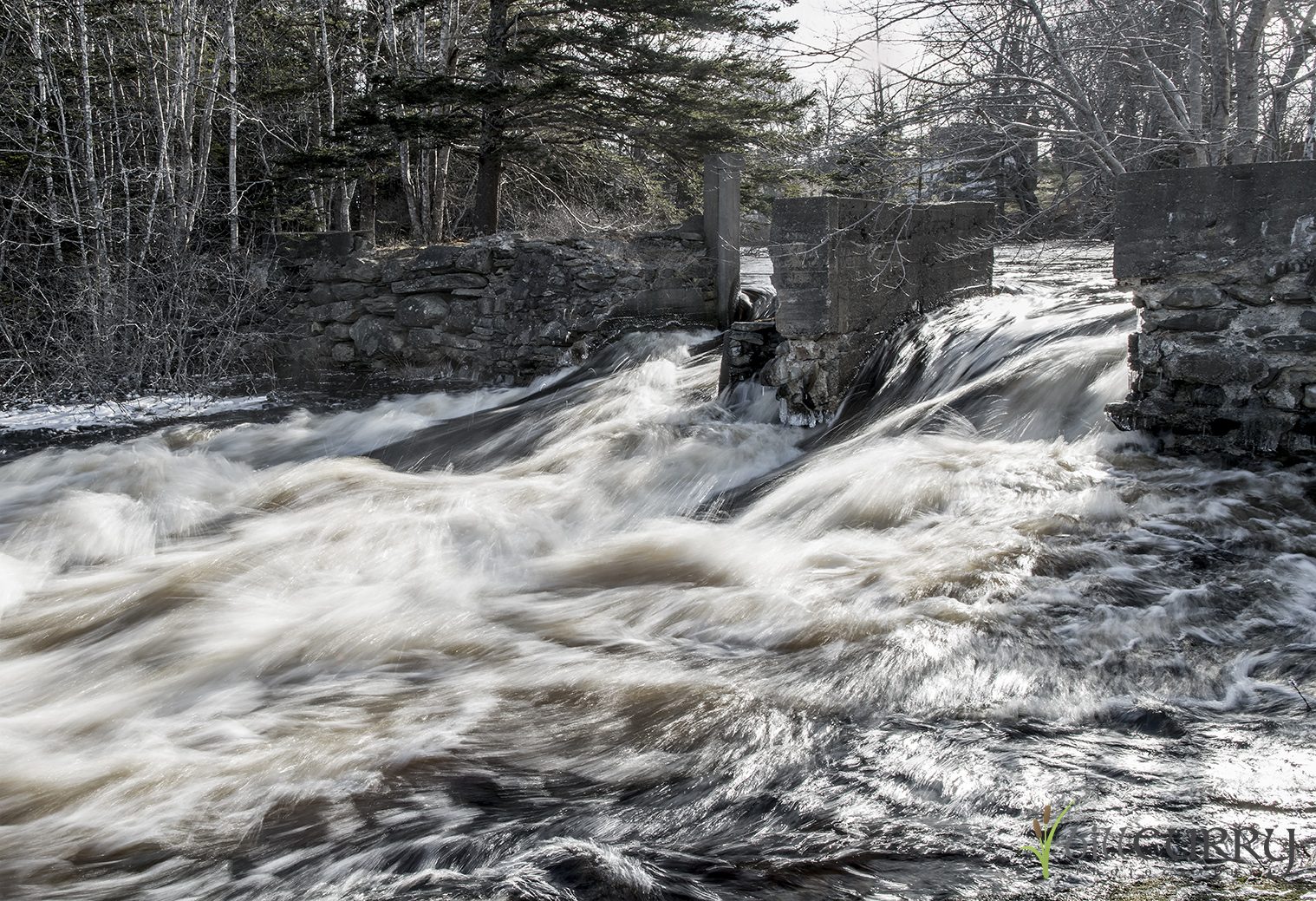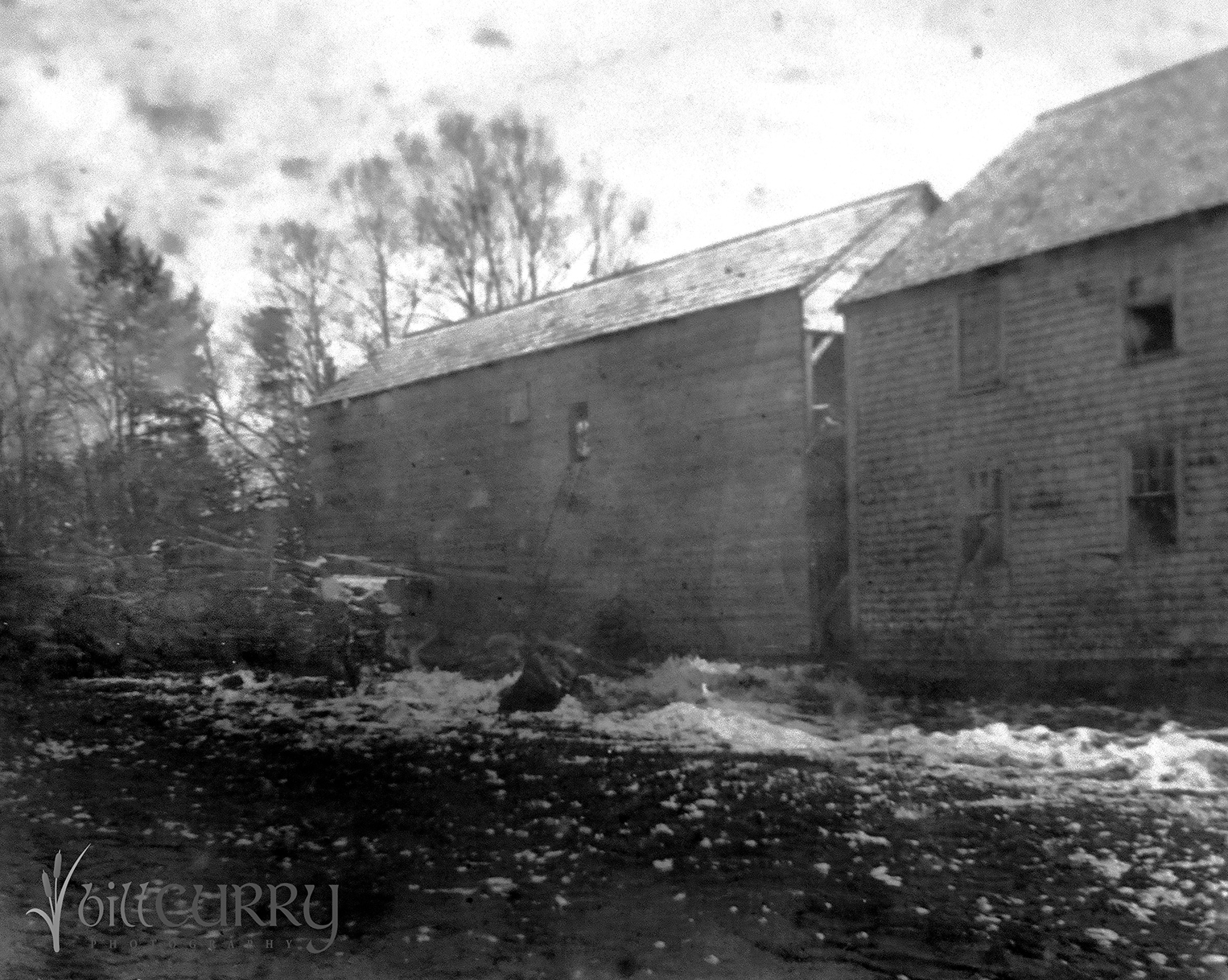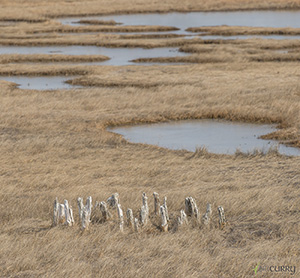
Durkee Mill Dam
Free Water
One thing that Nova Scotia has that is relatively rare in the eastern half of the continent is free watersheds. That is, most of the rivers in Nova Scotia are free flowing and have not been dammed for hydro-power. The reason for this is that most of Nova Scotia's rivers are relatively short, as the Province is so narrow and the headwaters not vast and so most rivers here are not well suited for power generation.
What the Province does have, though, are numerous rivers that were used to power saw mills and other industries which were dependent on smaller streams and the power that could be had. Those same rivers were used for dropping logs into in the interior and then the watersheds became the route the logs took to the mill. Logging for making ships was something, in fact, that Nova Scotia was so suited for, that at one point in the mid to late 1800's, Yarmouth had the second largest registered tonnage of shipping in Canada. It also meant that the Province was cut over regularly for the desired wood, especially for masts and larger ship's fittings.
When steam replaced sail as a power source for marine efforts, the Province declined as a wood producer for ships, but we still have some large-scale efforts at forest harvesting for pulp and paper. The remnants of the old sawmill days, though, can still be seen in many places on many rivers in Nova Scotia. Our family summer place on the Annis River in Deerfield is one such location - founded by a pair of my first cousins a few times removed (James Killam and Freeborn Durkee), the Durkee Sawmill was anchored on our property on the north side and ran across the river to the road on the south side. In sawmills, the river isn't totally blocked, it is allowed to run through the building or beside it, and the works are powered by the flow of water. The image on the top of this page is what is left of the Durkee operation today, and one can still see the wall on the north that directed the water (see on the left side of this image), and the remnants of the foundations of what was once a large sawmill. The photo below is from our family collection of images - taken of the Durkee Sawmill as it looked at the turn of the 20th century, so about 1900. One can see the same wall on the far left, and the double structure that housed the millworks and lumbering business.
As a kid, I caught many trout and witnessed people catching salmon at this spot, and even now folks still fish for kiacks (or gaspereaux as the locals sometimes call what are really alewives). The chain pickerel and smallmouth bass have replaced most of the trout, but the water still runs freely to the sea from our cottage on Hooper Lake, past Lake Ellenwood and out to where the Annis briefly meets the Tusket River and flows into the ocean. Past industry has done a lot to mess up our free water, as has acid rain and the introduction of invasive species of fish, it's now up to us to remember the past but with an eye to what we can do to keep that water clean and the very best habitat possible for our remaining wildlife. Besides, rivers are a special place to just sit and watch on a mid-winter's morning.
Durkee Sawmill circa 1900








